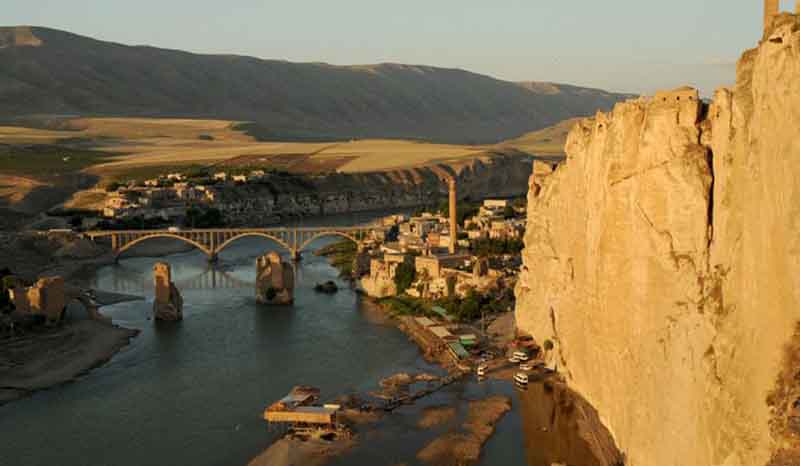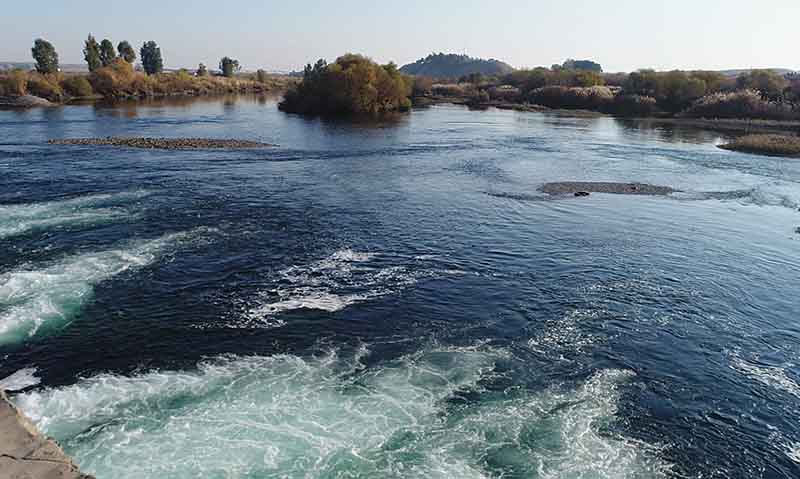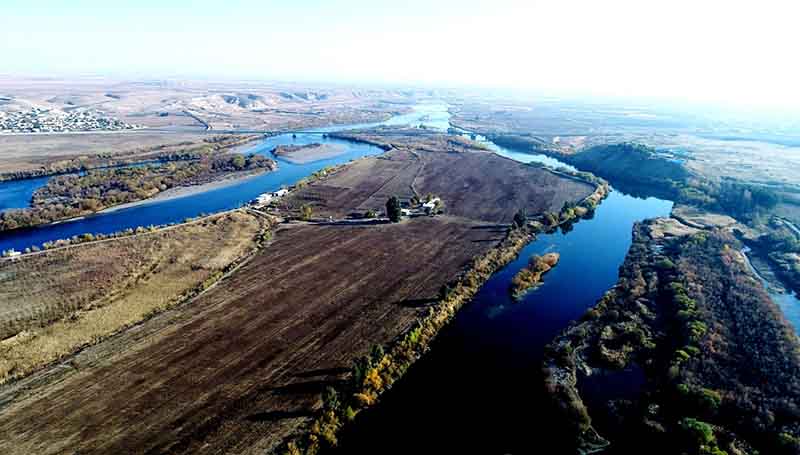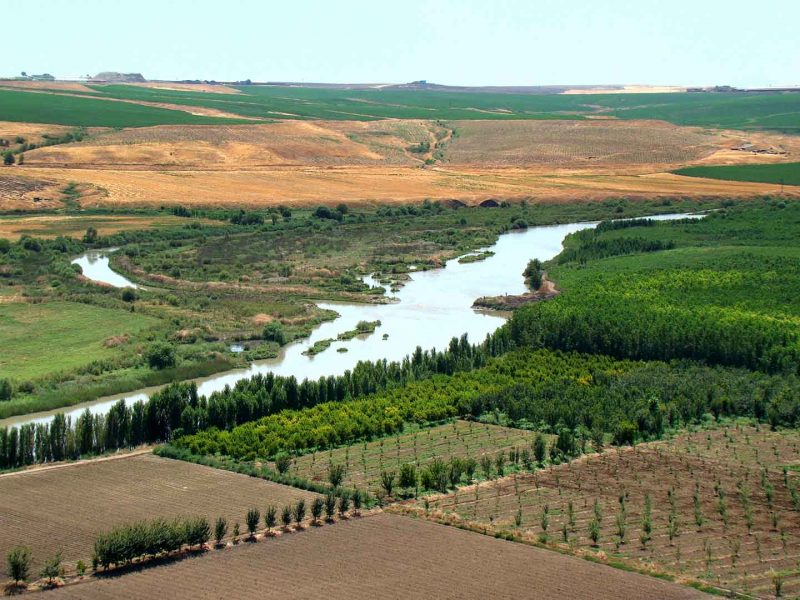If you are writing the history of world civilization, you absolutely have to talk about the Euphrates and Tigris rivers. These two Anatolian rivers unite in the Shatt al-Arab region and pour into the Gulf of Basra. Being in a mystic position with the metaphors, stories, legends and religious explanations that are woven around the rivers that scientists have already proven to exist before human history, the Euphrates and the Tigris are the Adam’s ale of the history of humanity.
The Story of Euphrates and Tigris
The Euphrates River forms together with the merging of the Murat River occurring in Ağrı and the Karasu River occurring in Erzurum. Later, with great enthusiasm, passing through Erzincan, Tunceli, Elazığ, Malatya, Diyarbakır, Adıyaman, Gaziantep and Şanlıurfa, it leaves the country. The Euphrates, in a hurry, enters Syrian territory, then goes to Iraq and finally pours into the Gulf of Basra. The answer for why the Euphrates is so active is below.
The Tigris, near which many prophets grew up, is considered very sacred. The Tigris River is formed by seepage from Lake Hazar in Elazığ, and it forms the border between Turkey and Syria by passing through Maden, Diyarbakir and Cizre in the 1900-mile adventure. After it merges with the large and small Zap Water in Mosul, it gives life to Mesopotamia. It passes 35 kilometers of Baghdad and is poured into the Gulf of Basra, just like the Euphrates.

The Tigris, near which many prophets grew up, is considered very sacred.
The Euphrates and Tigris flow separately hundreds of miles in separate regions. Sixty kilometers above Basra, in the area we call Shatt al-Arab, the two rivers come together to construct the magnificent geographical area we call Mesopotamia, which has been home to many civilizations. For both of them, this is the story of two lovers searching for each other.
Where does the Name Euphrates Come from?
During the ages, the two rivers that gave life to the land and to the earth also caused many lives to be lost at the same time. Especially in the spring, the rivers raged along with the raids, making the lives of the people in the surrounding area harder. In ancient times, a peasant named Euphrates lived on the Euphrates coast. The young man was summoned to battle only a few days after his marriage, and he could not go home for years. He went from battle to battle and land to land, and he was captured. According to the narrative, 20 years later, he was saved from his captivity and returned to his village.

In ancient times, a peasant named Euphrates lived on the Euphrates coast. (Photo: Orhan Erkılıç/GAZİANTEP-İHA)
However, it is not known why, but he did not want to go into the village in the day. He wanted to surprise his wife and return home at night. When the day finished and it became dark, he passed in through the door of his house and saw his wife with a young man in bed. Euphrates became mad and killed them while they slept. When morning came, the horrible truth appeared. The lying young man was the son of Euphrates, as his wife was pregnant when he went to war. Hearing this bitter truth, Euphrates threw himself into the river, which was called Medos at that time. From that date, the name of the river becomes Euphrates, and it begins to be called the Euphrates over time.

From that date, the name of the river becomes Euphrates, and it begins to be called the Euphrates over time. (Photo: Orhan Erkılıç/Gaziantep-İHA)
Fertile Crescent – Mesopotamia
Before the Euphrates and Tigris rivers unite in Shatt al-Arab and fall into the Gulf of Basra, they give life to a very wide geographical area within the borders of today’s Iraq. They form an oasis within the arid and desert climate of the Middle East. Because the physical structure of the region, which is called Mesopotamia, resembles a crescent, it is also called the Fertile Crescent. According to many historians, the beginning of civilization started on this land. Mesopotamia (meaning “between two rivers”), fed by the Tigris and the Euphrates, has been home to many important civilizations. The oldest and largest civilizations, such as Sumerian, Babylonian, Assyrian, Akad and Elam, are located here.
The place we call Mesopotamia, which is known only by water, green texture and soft climate compared to its surroundings in the past, gave life to the world’s economy with fuel oil, which is the underground wealth today.

These two Anatolian rivers unite in the Shatt al-Arab region after going thousands of kilometers.
Love of Euphrates and Tigris Rivers
These two Anatolian rivers unite in the Shatt al-Arab region after going thousands of kilometers.
This action reminds many people of love. The Euphrates, which always flows with enthusiasm, symbolizes man, and the Tigris, which flows in a delicate and soft way, symbolizes woman. The reason the Tigris is so calm is based on an illusion. Adam and Eve, the first people in the history of religions, came down here from the sky. The first murder, the first blood cast, and the first marriage all occurred on the edge of Tigris. According to belief, a revelation came to Prophet Daniel. Obeying the revelation, he drew the passing line of the Tigris River starting from Diyarbakir to Basra with the scepter in his hand. So, the Tigris obeys the order and always flows calmly. For this reason, Tigris is a woman, and the enthusiastic and crazy Euphrates is a man.
The Euphrates and the Tigris, who are guests of the majority of poets, are scattered here and there to find each other. Eventually, the two lovers meet at the Shatt al-Arab. But it does not last long, as there are many others, and they are poured into the Gulf of Basra and mixed with eternity.

